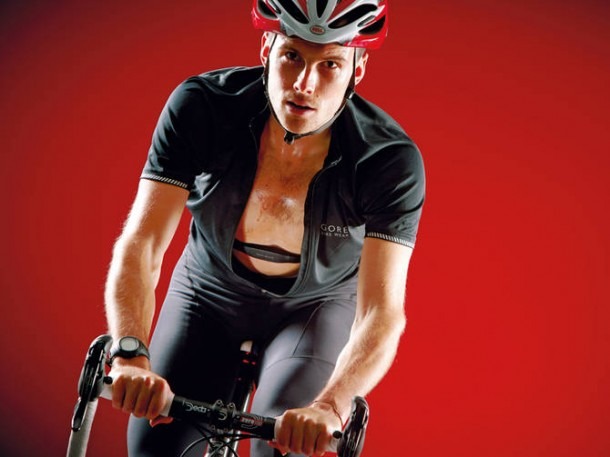By: Total Trainer Team

Using a heart rate monitor is the key to developing your fitness, not to mention controlling your weight and burning calories. Heart rate monitors, regardless of their cost, relay the heart rate of the wearer to a heart rate monitor watch via a band worn just underneath the chest. The band picks up the heart rate, allowing the wearer to access the intensity of their workout.
Using a heart rate to improve your fitness
Sports scientists, as well as athletes and regular gym users, understand that improving fitness isn't just about jumping on the nearest treadmill and running for as long as possible. To improve fitness it is important to workout at the correct intensity. To improve fitness exercisers should perform at 70 - 95% of their maximum heart rate. This means that a. an exerciser needs to know what their maximum heart rate is and b. at what percentage of their maximum heart rate they are working at. The latter can be understood by using a heart rate monitor whilst the former can be calculated using a very simple equation, 220 - age = maximum heart rate. This is called the Age Predicted Maximum Heart Rate, or APMHR.
Calculating your Age Predicted Maximal Heart Rate
To find your maximal heart rate and the percentage needed to improve fitness follow this simple guideline. Below, we have used the age of a 30 year old.
220 - 30 (age) = 190 (Age Predicted Maximal Heart Rate)
- 190 / 100 X 70% = 133 beats per minute (bpm)
- 190 / 100 x 80% = 152 beats per minute (bpm)
- 190 / 100 x 90% = 171 beats per minute (bpm)
- 190 / 100 x 95% = 181 beats per minute (bpm)
This means that that in order to improve in fitness a 30 year old exerciser needs to achieve a working heart rate between 133 - 180 beats per minute ... something without using a heart rate monitor they might not know.
Why the difference in the heart rate range needed for improved fitness?
There is a marked difference between the lower and upper heart rate range discussed. This is mainly to do with the type of exercise being used. Not necessarily the equipment being used but the goal of the exerciser and the intensity in which they will work. At 70% of your Age Predicted Maximal Heart rate (APMHR) the heart rate monitor should read close to 133 bpm (remember, this is for a 30 year old exerciser ... your APMHR may be different). This level of exercise will be able to be sustained for a long period of time and is good for first time exercisers or for elite athletes looking to recover from a hearder exercise session.
Those looking to get fit quickly will aim to push their heart rate to between 152 bpm and 181 bpm. This form of exercise is both exhausting but extremely beneficial for exercising both the muscles used and the efficiency of the heart and lungs to pump oxygen around the body. And whilst exercise at a higher intensity will be shorter, certainly at a heart rate above 85%, the benefits have been proven to significantly higher than exercising at 85% or lower.
Should I purchase a heart rate monitor?
In a word, yes. If you're serious about improving your fitness, burning excess calories and controlling your weight, or even losing weight, the use of a heart rate monitor will able you to monitor your exercise intensity and work at a level that will help you reach your health and fitness goals.

